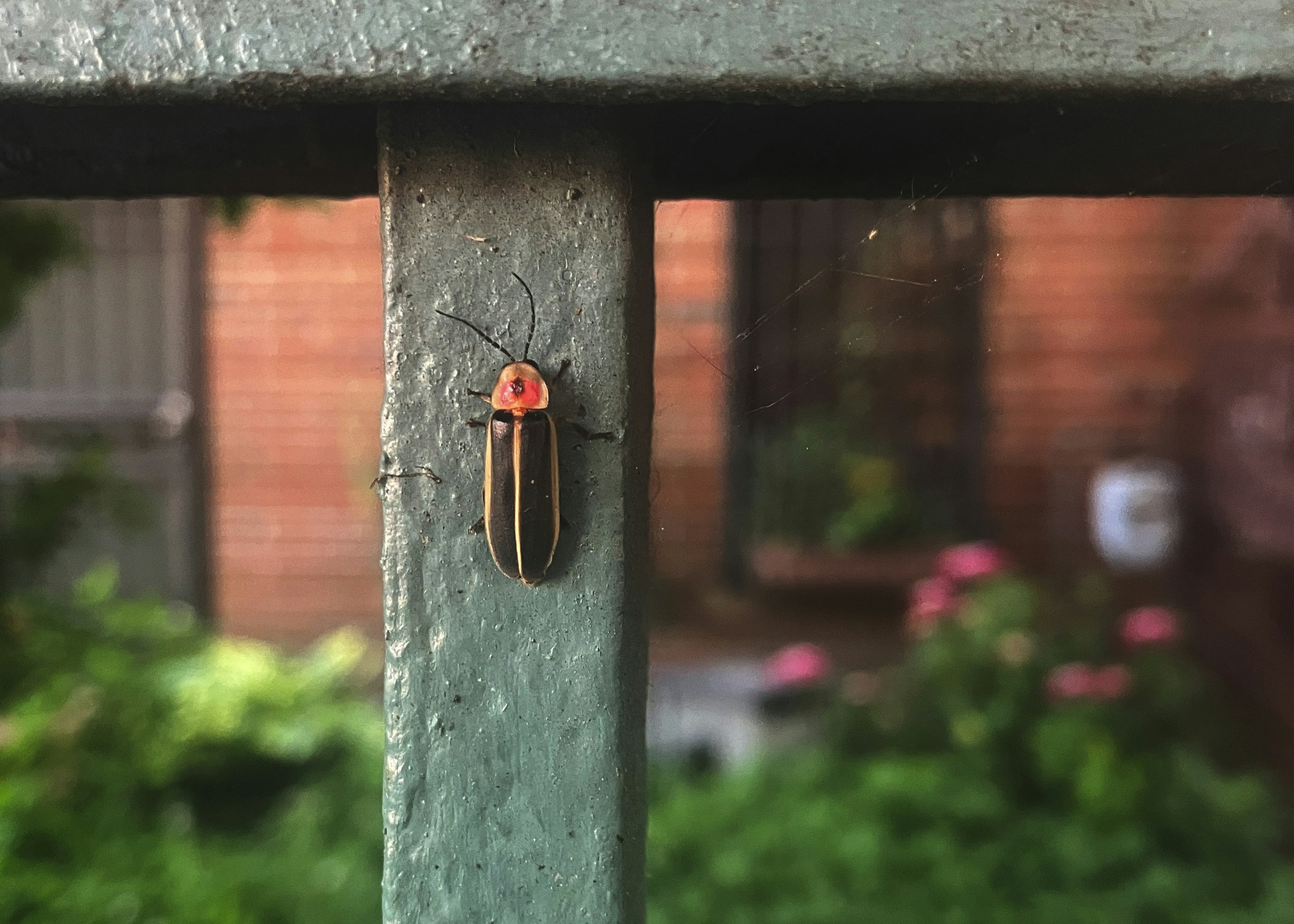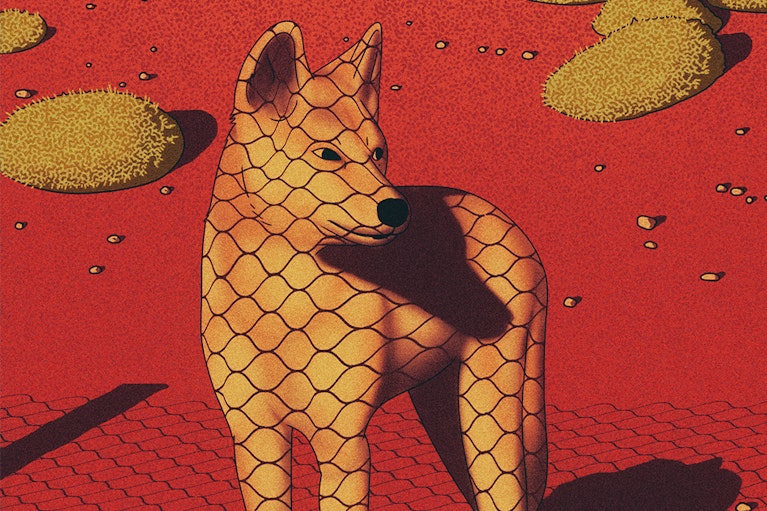Joanna Thompson is a freelance science journalist based in New York City. When she isn’t writing, she enjoys running and trying to identify weird bugs.
Part I: The Farm
For a few seconds, it’s like a scene from a movie: A gentle breeze rustles rows of garlic and carrot plants, tickling my shins. Early summer sun streams through the canopy overhead, leaves throw shade across the nearby squash.
Then a cab driver lays on the horn, shattering the peace.
I’m standing in Battery Urban Farm, a strip of green running along the tip of Manhattan, just above the yellow subway line. It’s a slightly surreal experience. In front of me, tomatoes are ripening on the vine. To my left, scalpers are systematically scamming tourists out of money for tickets to see the Statue of Liberty. It might not seem obvious at first, but this strange juxtaposition is part of a growing global trend.
Urban agriculture — that is, growing crops in a city setting — is becoming a popular alternative to industrial farming for eco-conscious city dwellers. Beginning in the late 1960s and early 1970s, members of the community garden movement transformed myriad abandoned lots into green spaces in cities like New York, Philadelphia and Seattle.
The concept of urban gardening gained fresh momentum in the mid-2000s with works like Michael Pollan’s “The Omnivore’s Dilemma,” which shed stark light on the environmental toll of “Big Ag.” In the decades since, dozens of farms, more than 700 community gardens and countless backyard plots have blossomed across New York City — as well as around the world.
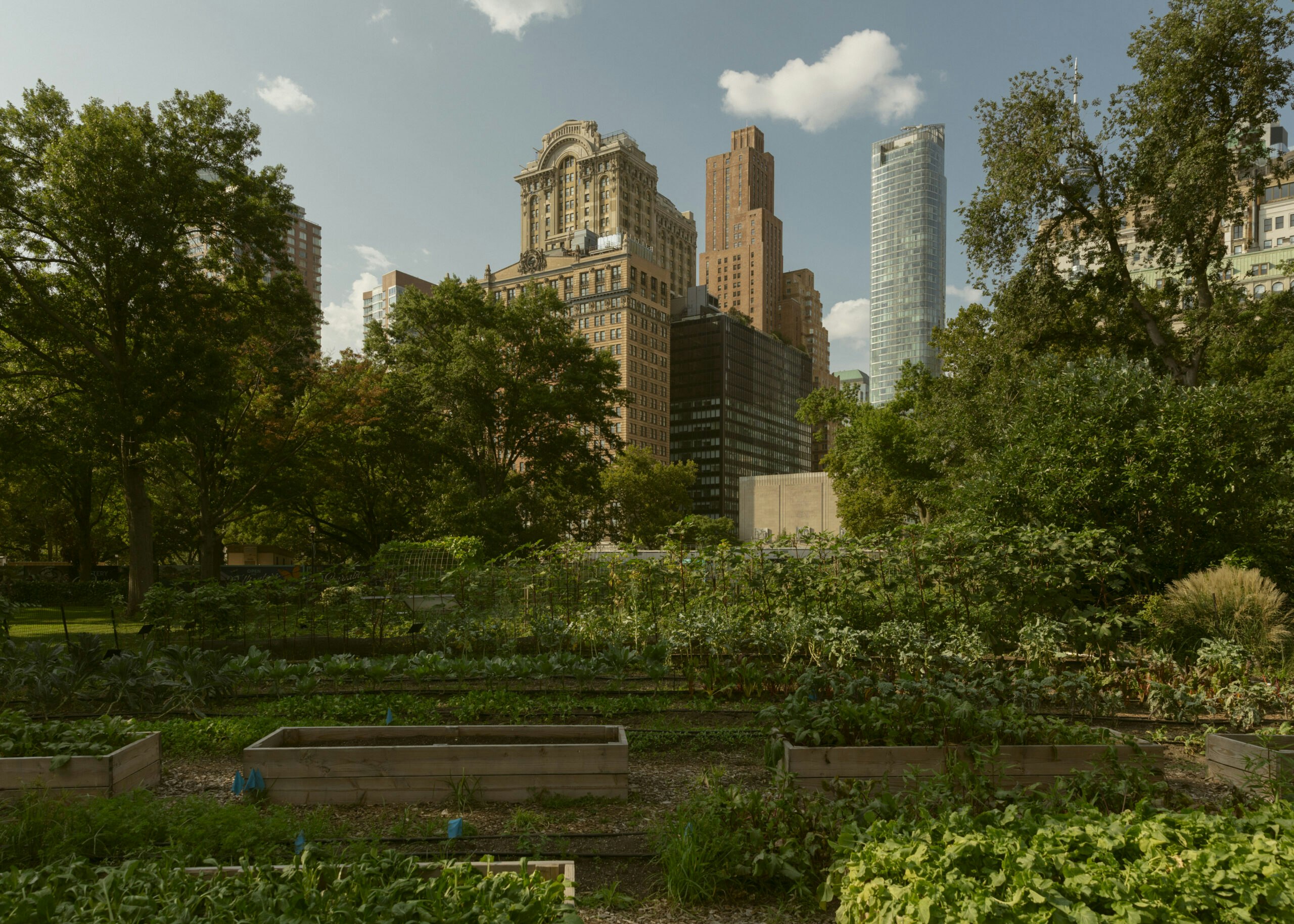
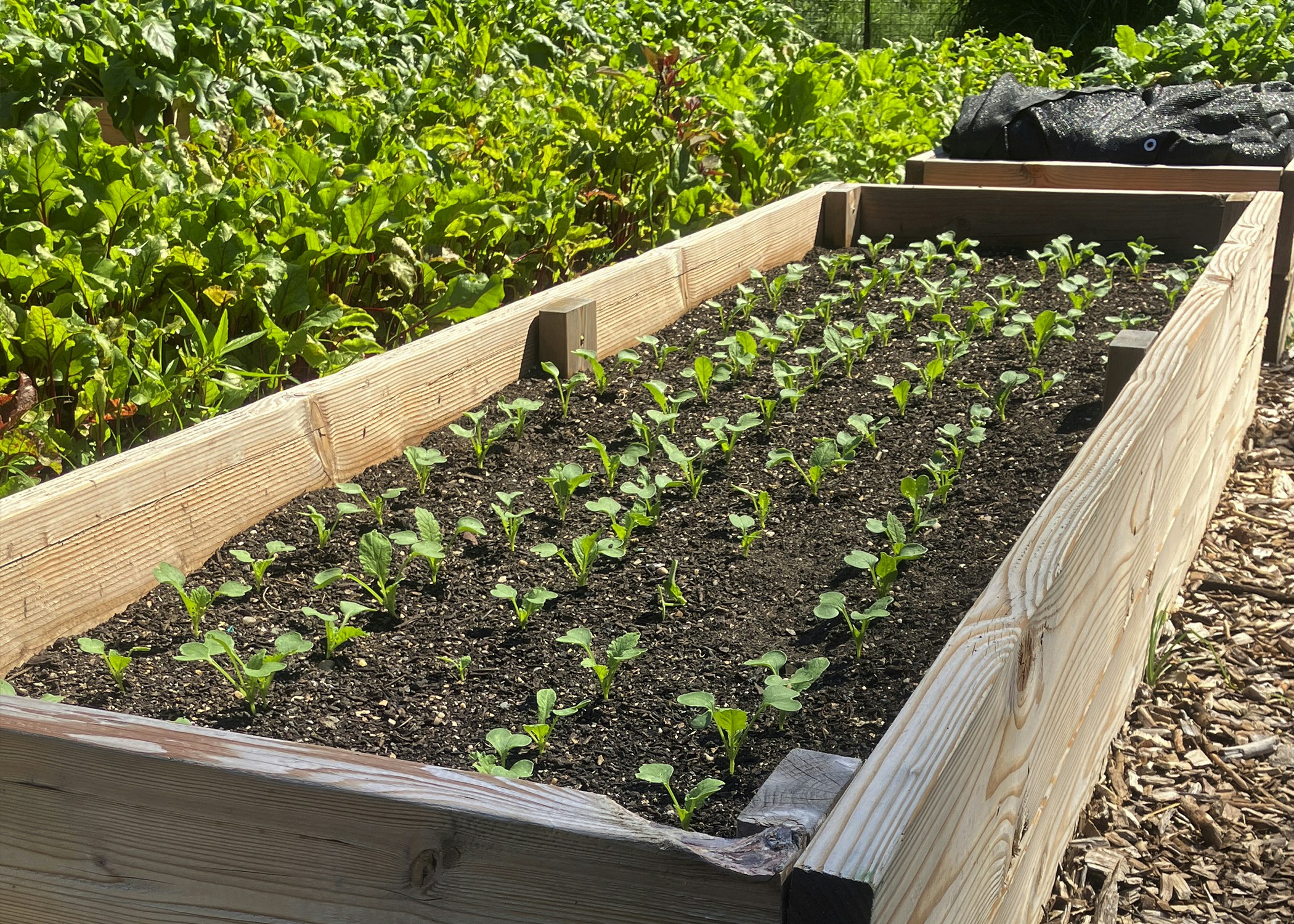
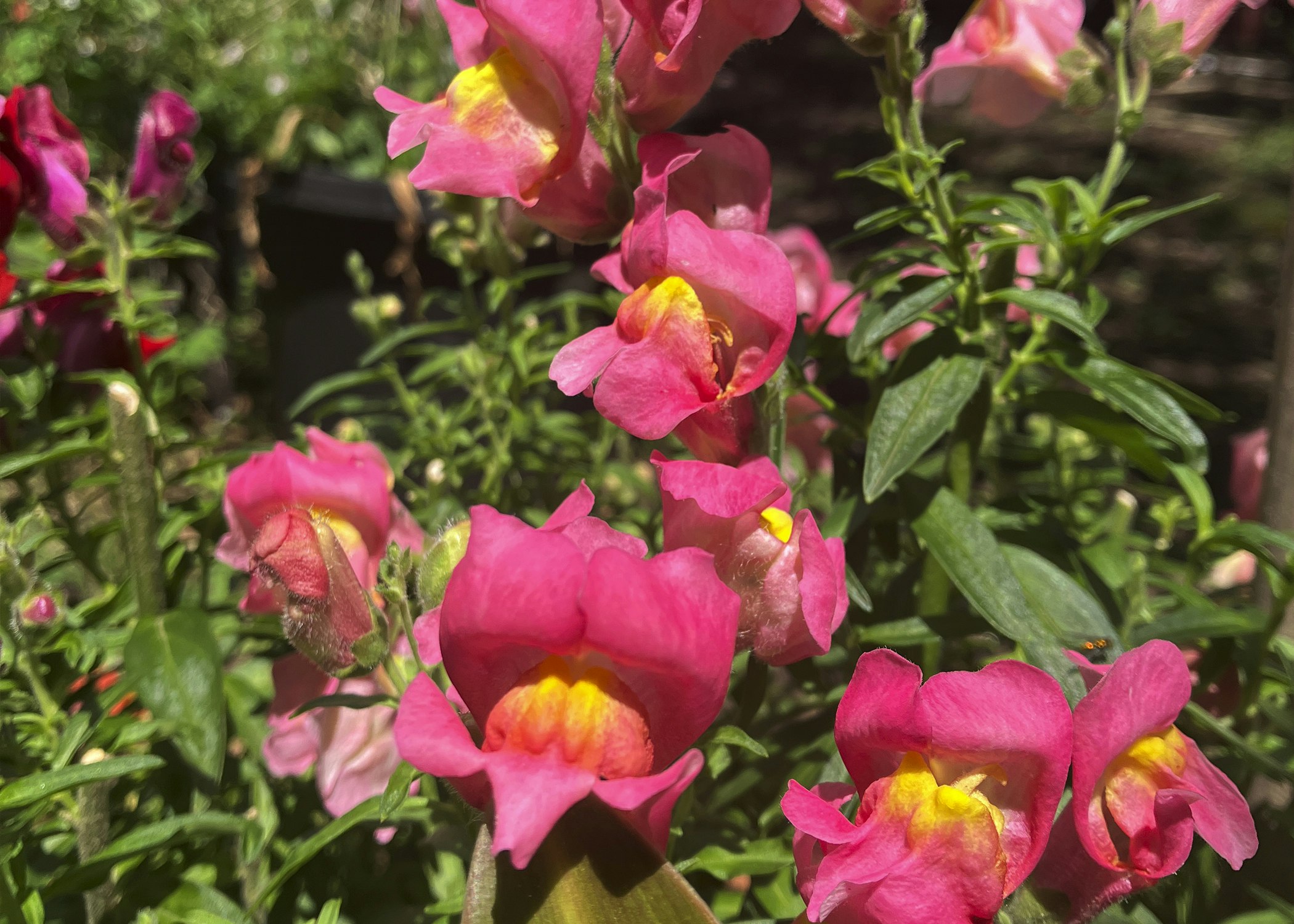
New York’s Battery Urban Farm was founded in 2011 by enterprising high school students working with The Battery Conservancy, a not-for-profit organization dedicated to revitalizing Manhattan’s southernmost park. Today, it provides produce for local restaurants and volunteers, and hands-on educational opportunities for thousands of students to learn about the intricacies of food systems each year.
Just about two miles north, New York University’s Urban Farm Lab hosts a small plot of peppers, carrots, kale, squash and other crops. Rice paddies and radishes line the urban farm at Randall’s Island, which is maintained by its own Park Alliance. Stroll through any trendy Brooklyn neighborhood and you’ll stumble across a volunteer-run community garden bursting with locally grown vegetables, fruits, herbs or flowers.
Projects like these are often touted as a kind of catch-all climate solution. And to be sure, they provide valuable community and environmental benefits, from teaching kids about agriculture to reducing summer heat. Even with the urban chaos surrounding it, the rows of neatly planted vegetables and herbs of Battery Park feel like an oasis — a tiny slice of paradise tucked in the middle of the concrete jungle.
To some native insects, though, these projects may as well be food deserts.
That’s because two environmental cataclysms are unfolding in parallel across our planet. The first is the climate crisis, a global shift in weather patterns driven largely by greenhouse gasses (most notably carbon dioxide) released into the atmosphere from burning fossil fuels. The second, quieter catastrophe is the biodiversity crisis, the swift disappearance of thousands of species due to myriad human activities. Both are deeply intertwined, but the climate crisis tends to get more attention because its impacts are more immediately threatening to human life and its underlying causes are easier to pin down.
However, Earth’s present biodiversity nosedive is equally damaging in the long run. Whether we realize it or not, we depend on other species for our survival. Frequently, they also end up depending on us.
There’s a tendency, especially in the United States, to try to separate ourselves from the rest of the natural world — we place “culture” in one box and “nature” in another, never expecting the twain to meet. But that mindset doesn’t reflect reality.
Humans constantly spawn new habitats in our wake. When we build skyscrapers, pile up garbage or plant gardens, we inadvertently create space for other species. Pigeons thrive in cities because our building edifices mimic the rocky cliffs where they naturally nest. Likewise, our trash heaps, with their snug nooks and smorgasbords of food scraps, make beautiful habitats for rats. As urbanist Jane Jacobs once wrote, “The cities of human beings are as natural, being a product of one form of nature, as are the colonies of prairie dogs or the beds of oysters.”
Other species shape our habits and habitats just as much: We need willow bark to make aspirin, wild yeasts to raise sourdough, hardwoods and pines for lumber. We rely on pollinators for 30% of the food we eat globally. And countless unnamed species of microbes help protect us from pathogens. Aldo Leopold, the famed conservationist, called awareness of the give-and-take the “land ethic” — a practice of reciprocity with nature.
“Humans constantly spawn new habitats in our wake. When we build skyscrapers, pile up garbage or plant gardens, we inadvertently create space for other species.”
Unfortunately, climate solutions sometimes ignore this need for biodiversity. When it comes to urban farming, it’s easy to focus on greener food production without providing space (or resources) for native, wild species to thrive. After all, the whole point of growing vegetables is for us, not bugs, to eat them.
In an effort to boost biodiversity, the Battery Park Urban Farm added two rows of native perennial flowers at the farm’s periphery to attract pollinators like bees and butterflies. In 2015, park officials also introduced a Forest Farm, a plot that grows shade-tolerant edible plants, like ramps, underneath a canopy of native trees. Other gardens throughout the city have begun to follow this lead, planting their own native species. These gestures might seem like tiny drops in the bucket — but science shows us that they’re onto something.
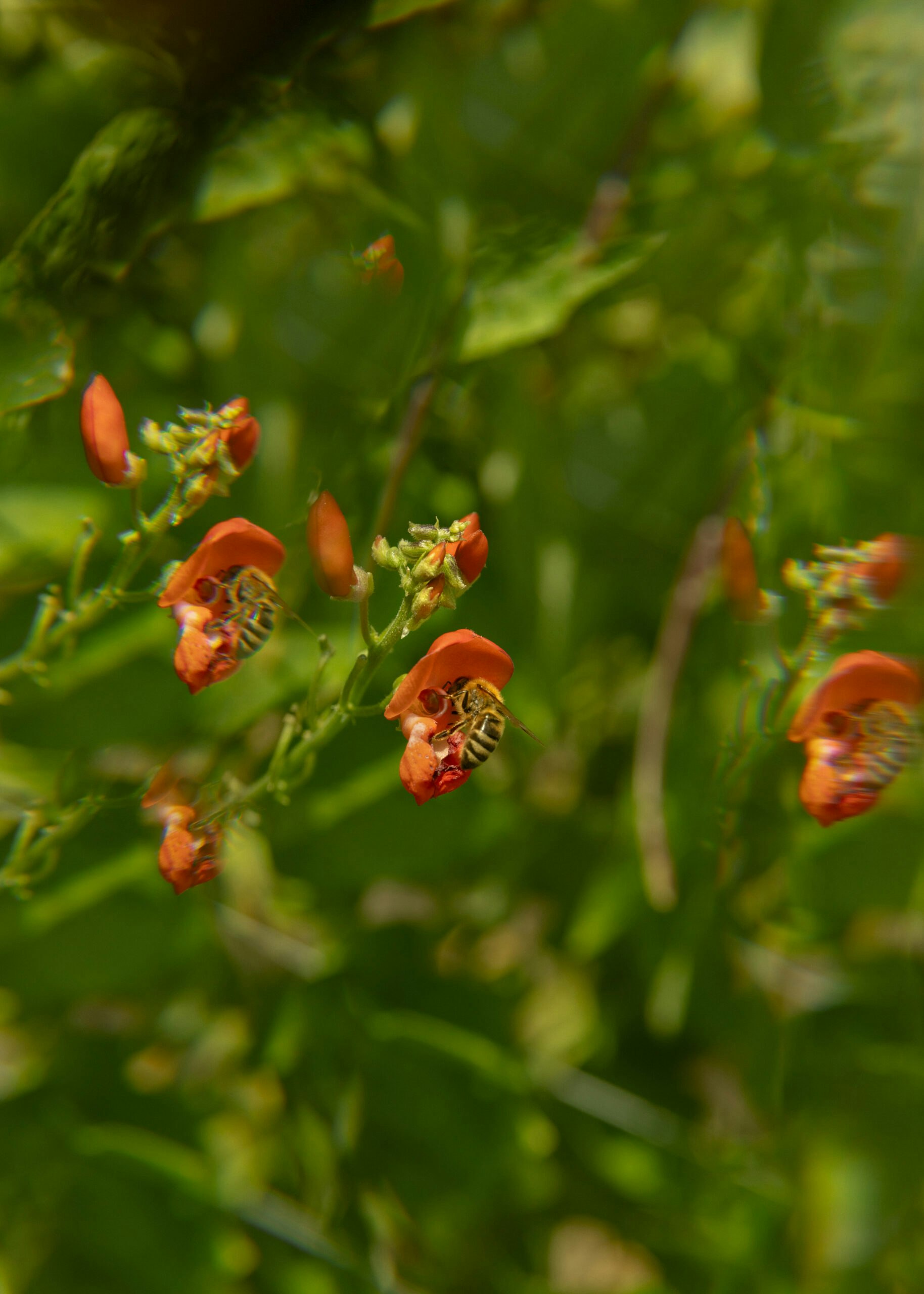
Part II: The Garden
Brooklyn’s Keap Fourth Community Garden is perhaps the platonic ideal of what a community garden should be. The 2,900-square-foot plot is home to a beautiful hodgepodge of vegetables, fruits, herbs and ornamental plants. It even boasts its own apiary — a light blue box full of honeybees. Volunteers from the surrounding neighborhood all chip in to bring the plants from seeds to seedlings to their tables.
On the day I visit, I am greeted by Crito Thornton, a volunteer with slate gray hair and a Sun Ra t-shirt. He leads me through the garden’s winding paths, pointing out beds of Swiss chard and kale, champagne currants, amaranth and a monstrous yucca. Keap Fourth has been growing fresh fruits and vegetables as part of GreenThumb, a network of community gardens spread throughout New York City, since 2013.
Over the years, volunteers have slowly incorporated other non-edible plants such as irises and marigolds. These flowers may attract honeybees and human admiration, but they don’t really support native insects, like leaf-cutter bees and tiger swallowtail caterpillars.
However, Keap Fourth is currently trying to make up ground on fostering biodiversity. While most of the garden is still dedicated to edible or ornamental plants, one shady corner is now set aside for growing native species for wild insects. According to research, this small change has the potential to make a huge difference.
When most people think of conservation, they picture huge swaths of land set aside for nature. A national park or forest, maybe a slice of private property or a public land trust — what John Muir called “Nature’s sublime wonderlands.” Cities don’t usually spring to mind. For certain organisms, however, urban spaces are just as important as these more traditionally protected areas.
Unlike mountain lions, moose or bison, many insects and small vertebrates don’t need access to acres of unbroken wilderness to thrive. Even a few square meters can provide valuable real estate for butterflies and other flying bugs, especially when those patches are dense with diverse vegetation or close to other green “islands” they can easily hop to. Something as small as a window box filled with flowers can be a stepping stone.
Historically, environmentalists haven’t factored such tiny pieces of vegetation into conservation discussions. But if gardens like Keap Fourth are any indication, that paradigm is beginning to shift.
Despite community garden gains in biodiversity, however, many still fall short as effective climate-friendly alternatives to industrial agriculture. A 2024 study in Nature Cities found that urban agriculture often isn’t very sustainable on smaller scales because of the unique set of challenges that city growing presents.
First, there’s the issue of soil contamination. To grow food fit for human consumption, many city crops need to be planted in specially constructed, raised beds so that plants won’t absorb things like lead, chromated copper arsenate from treated wood or acid leached from car batteries.
But building temporary raised beds also expends a lot of carbon. The Battery Park Urban Farm sidestepped this problem by strategically planting above a newly excavated subway tunnel, where fresh topsoil had already been brought in to rebuild the surface. Gardens like Keap Fourth, however, must rely on raised beds to grow table-safe food.
Then there’s the matter of scale. Industrial farms tend to be more energy and water-efficient than smaller, localized operations, simply because they are big. A mega-farm might guzzle thousands of gallons of water, but if it’s producing thousands of pounds of food in return, the net consumption will be offset. It is difficult for small operations to match that efficiency, especially when their growth is hemmed in and hindered by concrete and steel.
“Each new urban garden is the opening up of a microhabitat for a rich tapestry of organisms — insects & birds, small mammals, reptiles, a host of microbes & fungi.”
Finally, there’s access to resources like compost and fertilizers. Applying fresh compost can dramatically reduce a garden’s reliance on environmentally damaging synthetic fertilizers. Some urban community gardens can easily acquire compost through city programs, but many cannot. As a result, some well-meaning volunteers attempt composting on-site. The problem is that improperly managed compost piles can become sources of greenhouse gasses rather than a way to reduce them.
Since Mayor Eric Adams scrapped funding for municipal composting programs, many NYC gardens could soon face the tough choice between shipping expensive compost in from other places, which is carbon intensive, trying to make their own, or resorting to synthetic fertilizers that can throw surrounding ecosystems out of whack.
Under some conditions, researchers have found that food — serving for serving — from urban gardens can be up to six times as carbon-intensive to grow as crops on an industrial farm. Carbon-friendly food plants grown in an urban setting, like tomatoes and herbs, aren’t hearty staples. They’re great supplements to a summer cookout, but will never feed a family of four year-round, much less an entire city. As one urban agriculture researcher told me, “You can’t feed 8 billion people on designer crops.”
However, tallying up tomatoes and squash doesn’t capture the full value of an urban community garden. These spaces aren’t simply sites of food production; they also provide shade in hot summer months, absorb excess water during storms and act as social hubs in neighborhoods that otherwise offer little greenery. For denizens of areas without access to high-quality grocery produce, they can be one of the only sources of fresh fruits and vegetables around.
Keap Fourth hosts jam sessions for local musicians, art workshops and open garden nights complete with food grown on-site. It’s as integral to the neighborhood as the corner bodega or the old men playing dominos on the sidewalk near the intersection.
However, some experts believe there may be a way to retain the benefits of community gardens while avoiding the environmental pitfalls.
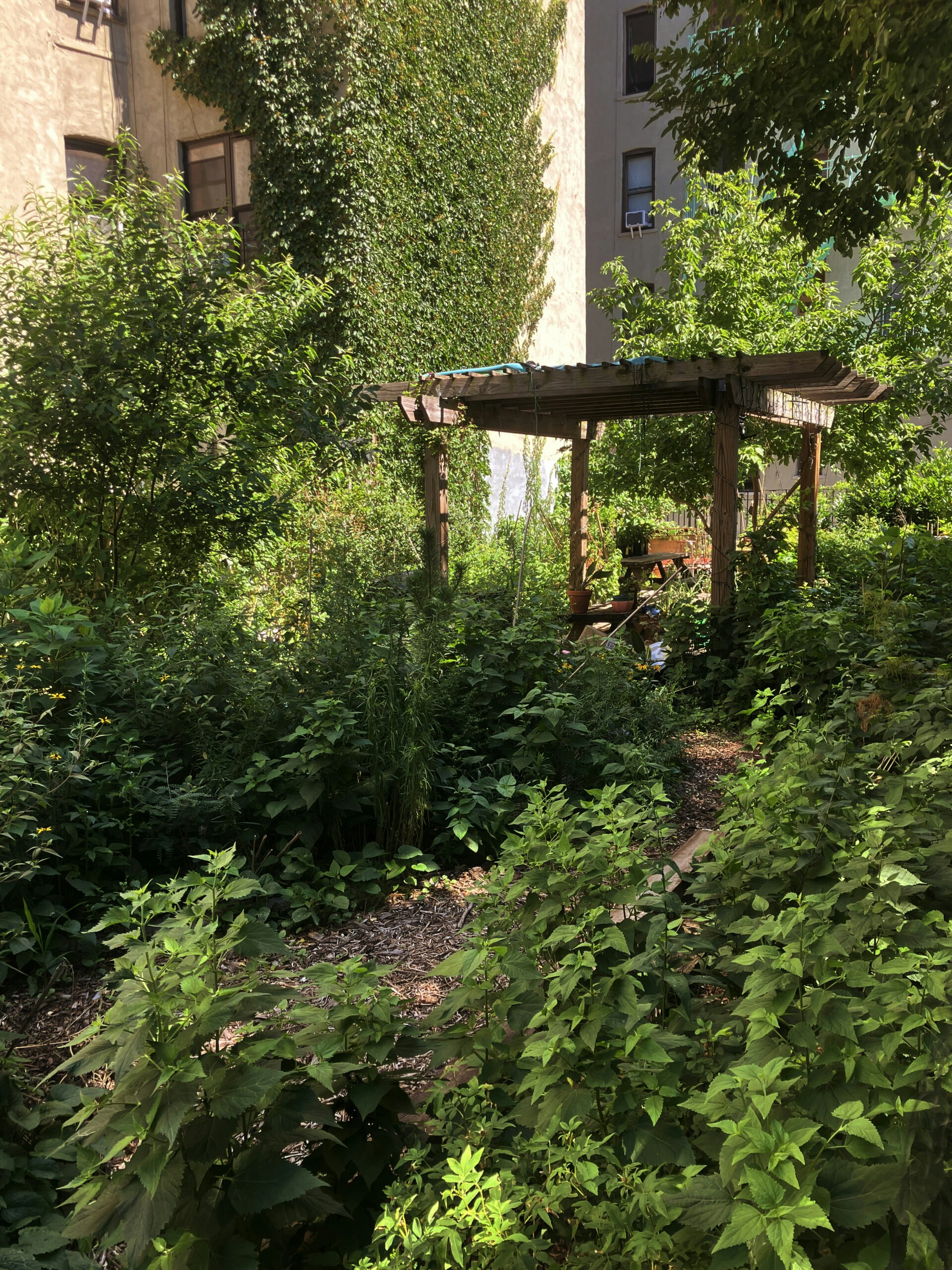
Part III: The Grove
In the 1988 film, “Coming to America,” Eddie Murphy’s character exits a cab by an empty lot full of flaming garbage cans on his way to rent a New York apartment. Though this scene was set in Queens, it was filmed on a Brooklyn block where a historically Puerto Rican neighborhood abuts a Hasidic Jewish community. There, Spanish, English and Hebrew mingle with reggaetón rhythms on warm summer nights.
And that trash fire lot is now the site of a garden bursting with lush, green plants. Dubbed the Hooper Grove community garden, it has been under the auspices of GreenThumb, the nation’s largest urban gardening program, since 2017.
Like many other local gardens, Hooper Grove is managed by neighbors who volunteer their time. When would-be gardeners first tested the soil, though, it quickly became apparent that Hooper Grove wasn’t equipped to grow produce. According to a garden manager, the lot was once home to a synagogue that burned down in the 1960s. Then it became a scrap yard for car parts (and cinematic garbage can fires). Over the years, heavy metals leached into the ground, making it unfit for food production.
But that didn’t mean its soil had to remain barren. Volunteers discovered that heartier native plants could take to the dirt and begin the process of bioremediation, drawing toxins out and breaking them down over time. The space now grows food — just not food directly meant for humans. Almost every plant at Hooper Grove is meant to be munched, sipped or lived in by native insects.
While visiting Hooper Grove, I’m greeted by Aaron Howard, a volunteer manager with a wild beard and wide smile. Howard has been in charge of deciding what to grow in the garden for the last four years. Ever since encountering the work of Doug Tallamy, an entomologist and ecologist at the University of Delaware, he has become a passionate advocate for native plants.
Tallamy, along with a team of fellow researchers, helped develop a framework known colloquially as the “Lepidoptera index.” This system gives the native plants in a region a score based on the number of caterpillar species they support. For example, in New York, goldenrod provides food and shelter for over 100 different caterpillars. Willows in some northeastern U.S. counties can support around 430 species, and oaks host a staggering 557, according to Tallamy. In contrast, crape myrtle, which is native to Asia, Australia and parts of Oceania, only supports a single type of American caterpillar, Tallamy told me.
“For a mason bee or a chickadee, urban gardens could be the difference between life & death.”
As adult butterflies and moths, these insects play a vital ecological role by helping pollinate native plants — including some flowers that specifically evolved to attract them. But arguably their most crucial ecological role is in the larval stage. As caterpillars, they are the single most important food source for hundreds of species, including a huge variety of birds.
According to Tallamy, it can take some 9,000 caterpillars to raise one clutch of chickadees from egg to adulthood. Without enough caterpillars to go around, he told me, already declining bird populations could continue to plunge in number.
Under Howard’s direction, Hooper Grove volunteers took Tallamy’s framework and ran with it, using the Lepidoptera index to maximize the number of bugs attracted to the garden. There are around 100 species of native plants packed into Hooper Grove’s 2,341 square feet of soil. Tall tangles of goldenrod press up against aster constellations. An oak dapples shade across Virginia creepers. A riot of Joe-pye, coneflower and ironweed threatens to spill through the gate. That density might look messy to human eyes. But to an insect, it’s like a city block filled with enough apartment nooks and eateries to support a community.
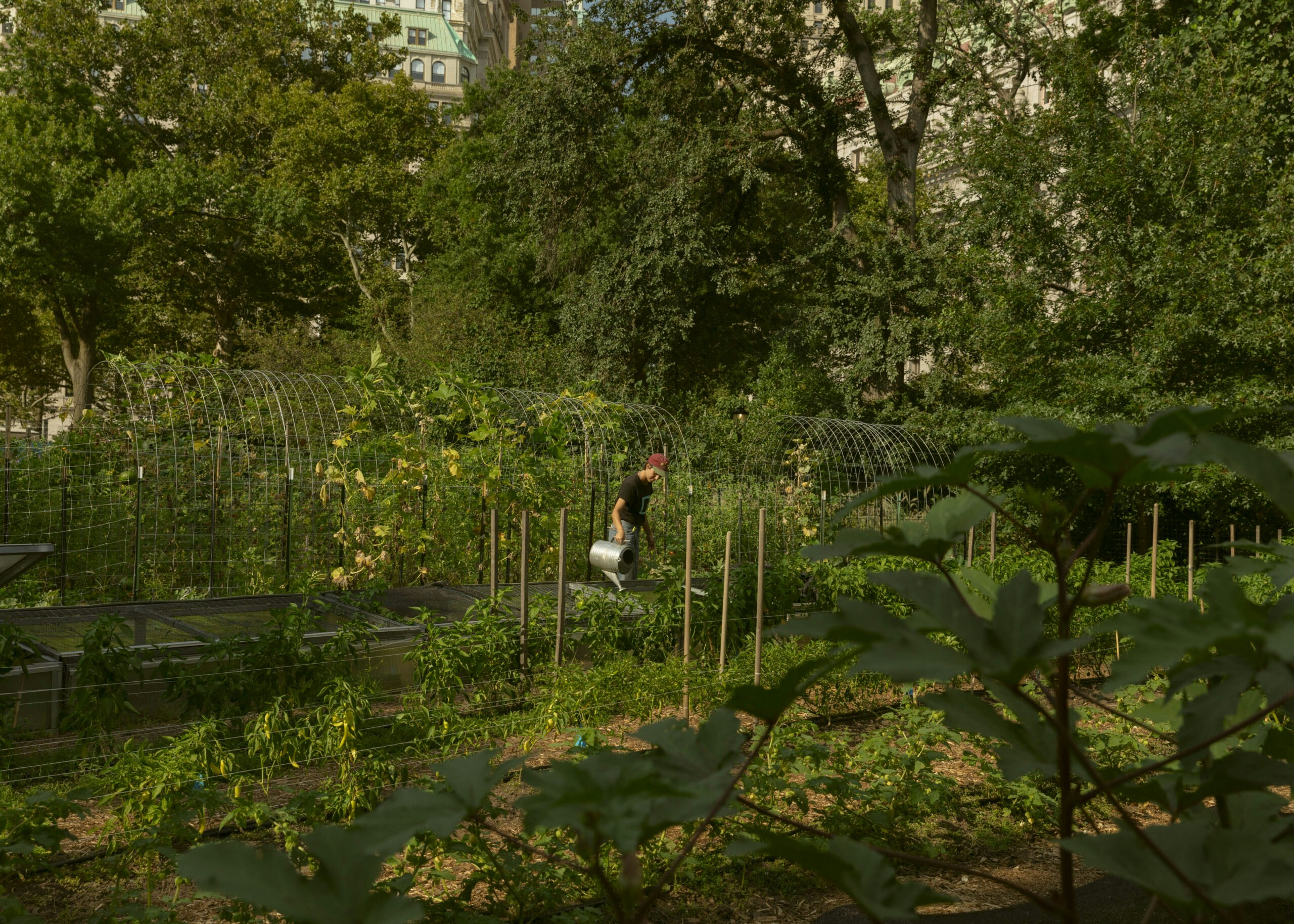
Of course, the garden isn’t a perfect Eden. Volunteers sometimes must remove beer cans and occasionally toss a rat off the premises with a shovel. Stray cats still wander through in search of an easy meal.
As the years go on, though, Hooper Grove has attracted an increasingly rich array of organisms. Howard has spotted hummingbirds and red admiral butterflies flitting between the flowers. The low drone of bees (Howard has counted nearly 200 different species) fills the air. Warblers and swallows make pit stops each migration season, while cardinals and sparrows dart through the trees year-round. Last year, he tells me, they finally built up enough leaf litter for fireflies to move in.
To my ears, this inclusion sounds almost too good to be true; I grew up in an area famous for its fireflies, and I’d seen precious few since moving to New York. But Howard encourages me to come back and check for them one evening, and I make a mental note to do just that.
City living is all about embracing diversity and doing the most with whatever sliver of space you can carve out. Perhaps conservation efforts in urban spaces should adopt a similar scrappy mindset. Each new garden is the opening up of a microhabitat for a rich tapestry of organisms — insects and birds, small mammals, reptiles, a host of microbes and fungi.
Areas like Hooper Grove provide the shade, the water-collection and the carbon-storage benefits of a conventional garden, while also supporting biodiversity. They’re a small way to practice Leopold’s land ethic amidst a sea of concrete. And not every urban garden needs to be completely dedicated to caterpillars. Setting aside a slice for native plants — as Keap Fourth and the Battery Urban Farm have done — can serve as an equally vital source of food and shelter for local species.
At the same time, there is no silver bullet for climate change and biodiversity loss. Simply cultivating native plants won’t save the world; like any other environmental solution, urban gardens have potential pitfalls, and they won’t stop fossil fuel companies from burning through our planet’s lifeblood. But for a mason bee or a chickadee, they could be the difference between life and death.
Planting gardens not just for ourselves, but also for our fellow members of the natural world creates space for other creatures to flourish, even in the dense heart of America’s largest city. I want to get to know my neighbors, human and otherwise.
Part IV: Coda
One June evening, I found myself wandering down the Hooper Grove block while on a long phone call with a good friend. It was a near-perfect New York night; warm, but not yet thick with summer humidity. As I passed the community garden, a twinkle caught my eye.
At first, I thought it was a strand of fairy lights twining up a neighbor’s tree. But the light wasn’t steady enough — this was more flicker than glow. Then I looked more closely at the neighbor’s wrought iron fence. A single orange-and-black firefly was perched on top of it. It flashed once, then spread its wings and vanished into the fading light.
